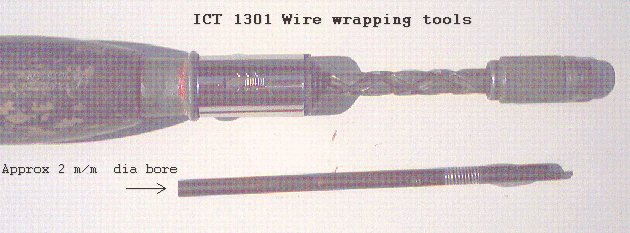** The ICT 1301 Resurrection project
**
Hereinafter refered to as the 1301 Working group of the "Our Computer Heritage" project
News of a special Visitor to the Project,
The designer
Dr Bird, Visted on the 13th October 2004 :-
Designer DAY News and Pictures
After a visit from the Hon Secretary of the Computer Conservation Society
( Hamish Carmichael )
and Martin Wright as co-ordinator of 1301 information for the pilot stage of
the Computer Conservation Society's "Our Computer Heritage" project. on Saturday the
6th December 2003.
Both the owner of flossie and myself are now known as 'the 1301 Working group'.
We are most happy to be part of the
"Our Computer Heritage" project
* Brief Activity Summary *
As of the end of April 2003, the project had started, and started well, the machine
does indeed fire up, and although there are many problems, sufficient of the
machine is working to raise my spirits and allow me to hope the project can be
completed. I am working with Roger, who owns the machine, and we manage to get
together, for about a day, every two weeks or so. If you read the repair diaries you
will discover we have closed the activities for 2004, and plan to restart in april
2005.
Statement of the problems and issue's
This elderly machine is called Flossie, now my father advised me to
never ask a lady her age. But the truth is that Flossie was built about 1961,
spent a working life at London University, where one on her many roles was to
produce GCE exam results, in about 1972 she was retired into private hands. So
the age of the machine combined with the number of years since it last ran
reliably, means we face a combination of many faults. For example, it was noted
that 3 out of 10 of the programmed indicators, do not work correctly. However to
resolve these problems, means we need a reliable Cpu decode of the functions
required to fault find further. That coupled with the simple fact that at each
switch on or off we risk a new fault being added to the growing list and some of
our problems may just be either cold or warm up related.
So all we can do is tackle each problem as it is identified or as it
occurs, in the certain knowledge that it is one less problem to be resolved,
when it is out of the way. The 'PLAN' is to work on the problems as follows:-
1st step is the basic control path based around Control registers one, two and
three, the function decode, and the Register 'A' path, 2nd step is the IAS
access, and load/store functions, and register interchange functions on
registers 'B' and 'C' . 3rd step is the drum transfer functions, further
successive steps are into the tape control unit and then we can start to tackle
the peripherals.
*** Multi Media from the project ***
*** Pictures from the project ***
*** Other 1301 Computers ?
***
The Repair Diaries
More updates as and when we
visit. Do check back for pictures, updates and news on this project.
** Appeal for Historic tools
**
To complete this project we are in need of any old 1301 wire
wrapping tools, which engineer's may still have tucked away in old tool boxes,
so if you think you have one of these and wish to donate it to the project, then
email us on:-


Thanks go to contributors so far:- "Roll of
Honour"
Eddie, Phil Littlechild,
J.Prockter, James Boyle
Bruce Chalmers, Chris White
John McGarel, Dave Wilson, Tom Davis, Peter Vigar
Mike Trueblood, who invites you to visit " Mike's Home Page"
Without your help this project could not
have continued.
We have also been cheered on by :-
Mike Curley, Mike Milsom
Alan Tubbs, Nigel Howarth, Brian Spoor ( see the 1900 page )
Pat Taylor, who did testing of the 1301's in stevenage.
Bill Sheperd who remembers Putney in the 1300 and the 1500 days.
Bill Foote who worked on the early versions of the Initial Orders Code
Chris Rowbotham
And a special thank you to Trevor Chapman.
See if there is anything tucked away in your Shed, Attic or
Garage that could help this project !
©"Copyright Shedland Software
design"

